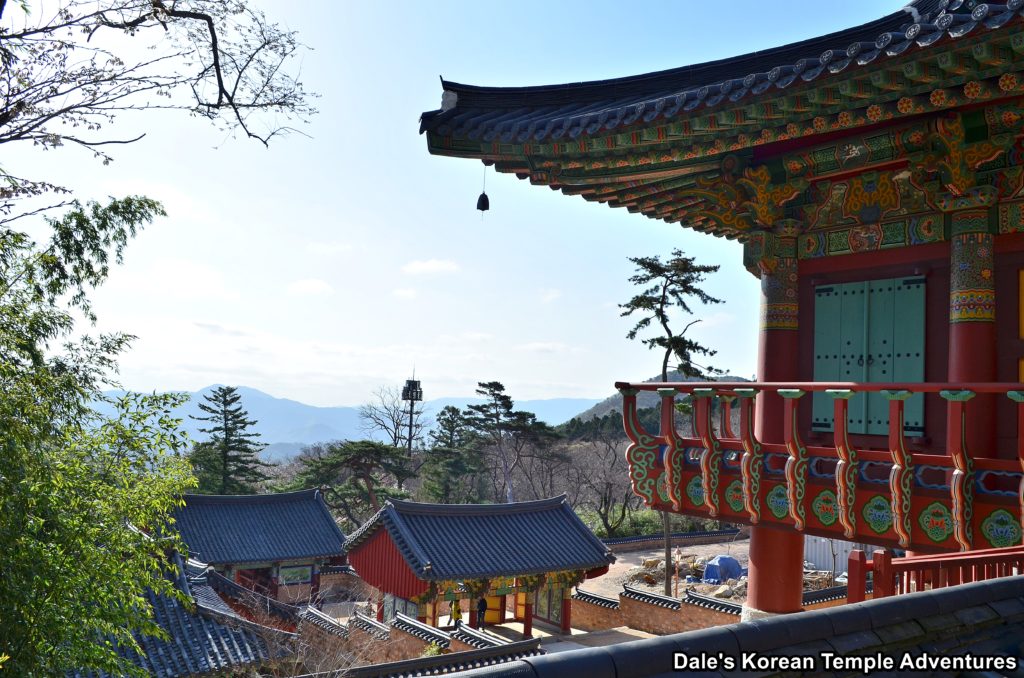
Hello Again Everyone!!
Beomeosa Temple, located in northern Busan in Geumjeong-gu, was first constructed by the famed temple building monk, Uisang-daesa (625-702). Beomeosa Temple means, “Nirvana Fish Temple,” in English, and it’s located on the northeast side of the massive Mt. Geumjeongsan (801.5m).
Most of the temple buildings at Beomeosa Temple date back to the early 17th century. Like so many other historic sites in Korea, Beomeosa Temple was completely destroyed by fire by the invading Japanese during the Imjin War of 1592-98. Beomeosa Temple was later re-built in 1613. Hence, the reason so many of the temple structures date back to the early 17th century. Currently, Beomeosa Temple is one of the sixth largest temples in Korea; and alongside Tongdosa Temple in Yangsan, Gyeongsangnam-do and Haeinsa Temple in Hapcheon, Gyeongsangnam-do, it’s one of the three most important temples in the southeast (Yeongnam) region of Korea.
As you first approach the temple up a broad brick pathway, and past a collection of ancient stone graffiti and pine trees, you’ll encounter the first of four temple entry gates. The first gate is the Iljumun Gate, or the “One Pillar Gate,” in English. At Beomeosa Temple, this gate is actually called the Jogyemun Gate. This gate dates back to 1614, and it’s Korea Treasure #1461. The next gate along the way is the Cheonwangmun Gate. This gate houses some of the best examples of the Four Heavenly Kings in all of Korea. Originally built in 1699, this gate was tragically destroyed on December 16th, 2010, when a disgruntled temple working committed an act of arson and burnt this gate to the ground. Fortunately, this act of arson was corrected in the summer of 2012 with the rebuilding of the former gate as a near replica of the Cheonwangmun Gate.
The third gate along the way is the Bulimun Gate, or the “Gate of Non-Duality.” This gate was rebuilt to help restore Beomeosa Temple to its former temple layout, which now includes the massive Boje-ru Pavilion that people pass under to gain entry into the lower courtyard at Beomeosa Temple. Both the Bulimun Gate and the Boje-ru Pavilion were built around 2015.
Now standing in the lower courtyard, you’ll notice the diminutive bell pavilion, especially for a temple this size, to your right. Straight ahead, and up a set of stairs adorned with a pair of stone lions, is the Daeung-jeon main hall. This hall dates back to 1602, and it’s Korea Treasure #434.
But before exploring the Daeung-jeon Hall and the upper courtyard at Beomeosa Temple, there are a couple shrine halls to the right on the lower temple courtyard. The first is the Mireuk-jeon Hall, which is dedicated to Mireuk-bul (The Future Buddha). And the next is the Biro-jeon Hall which houses a beautiful sunlit mural under which Birojana-bul (The Buddha of Cosmic Energy) sits on the main altar. Joining these shrine halls in the lower courtyard is a three story stone pagoda that dates between 826-836 A.D. during the reign of King Heungdeok of Silla. The pagoda is also a Korean treasure, Treasure #250. And it’s the only part of the temple that remained after its destruction in 1592.
Now, climbing the stone stairs that bring you to the upper courtyard, and back to the Daeung-jeon Hall, the exterior walls of the main hall have faded but you can still see an image of a white tiger on the right side. As for the interior, which is beautifully ornate, and resting on the main altar, is a triad of statues centred by Seokgamoni-bul (The Historical Buddha). Joining Seokgamoni-bul on the main altar are Mireuk-bul and Yeondeung-bul (The Past Buddha). These wooden sculptures date back to around 1661, and they, too, are a Korean treasure: Treasure #1526. And if you look around the interior of the main hall, you’ll see wonderful wooden images of dragons and Bicheon (Flying Heavenly Deities).
To the right of the main hall is the Gwaneum-jeon Hall that houses Gwanseeum-bosal (The Bodhisattva of Compassion). Records show that this hall dates back to 1613, and then later rebuilt in 1721. And to the immediate left of the Daeung-jeon Hall is the Jijang-jeon Hall that houses Jijang-bosal (The Bodhisattva of the Afterlife).
The final temple shrine halls that visitors can explore at Beomeosa Temple are to the left of the Jijang-jeon Hall. There is a connected three shrines shrine hall. The first of the three, and to the far right, is the Palsang-jeon Hall, which houses eight elaborate murals depicting the life of the Buddha. This shrine hall was constructed in 1705. The next, in the centre, and the last to be built, is the Dokseong-gak (The Lonely Saint Hall). And the last, to the far left, and built in 1613, is the Nahan-jeon Hall (The Historical Disciples of the Buddha Hall). It’s unclear when all three were joined together to form a triad of shrine halls, but it was probably in the late Joseon Dynasty (1392-1910).
To the right of this triad shrine hall, and past a large boulder with ancient graffiti on it, is the Sanshin-gak (The Mountain Spirit Hall). And to the left of the triad shrine hall, and set back a bit, is the newly built Yaksa-jeon (Medicine Buddha Hall).
Admission to the temple is free, which is a steal especially for a temple of this size.
HOW TO GET THERE: From the Beomeosa Station subway stop, Stop #133 on line #1, leave this station through exits #5 or #7. From there, walk five minutes to the bus stop and take Bus #90 to get to the entrance of Beomeosa Temple.
OVERALL RATING: 9.5/10. While not quite as amazing as the neighbouring Tongdosa Temple, and missing that something special like Haeinsa Temple, Beomeosa Temple rates a little lower than a perfect score. With that being said, though, Beomeosa Temple has a lot for visitors to enjoy like the welcoming Jogyemun Gate, the Korean Treasures spread throughout the grounds like the Daeung-jeon main hall and the three story stone pagoda. There really is something for everyone to enjoy, and I hope you do when you next visit Busan!
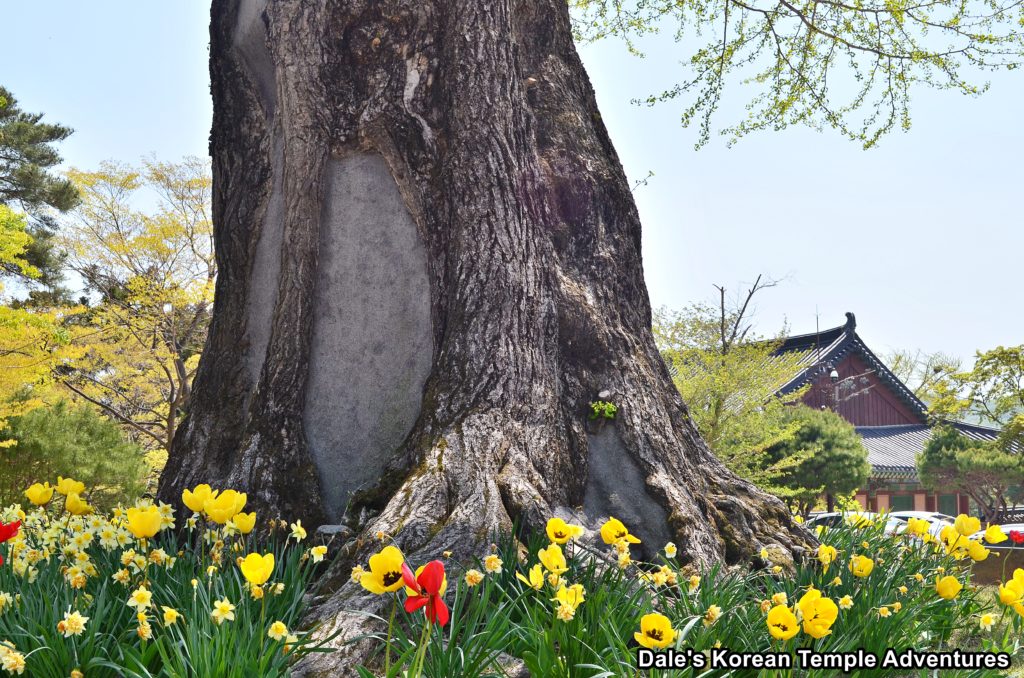
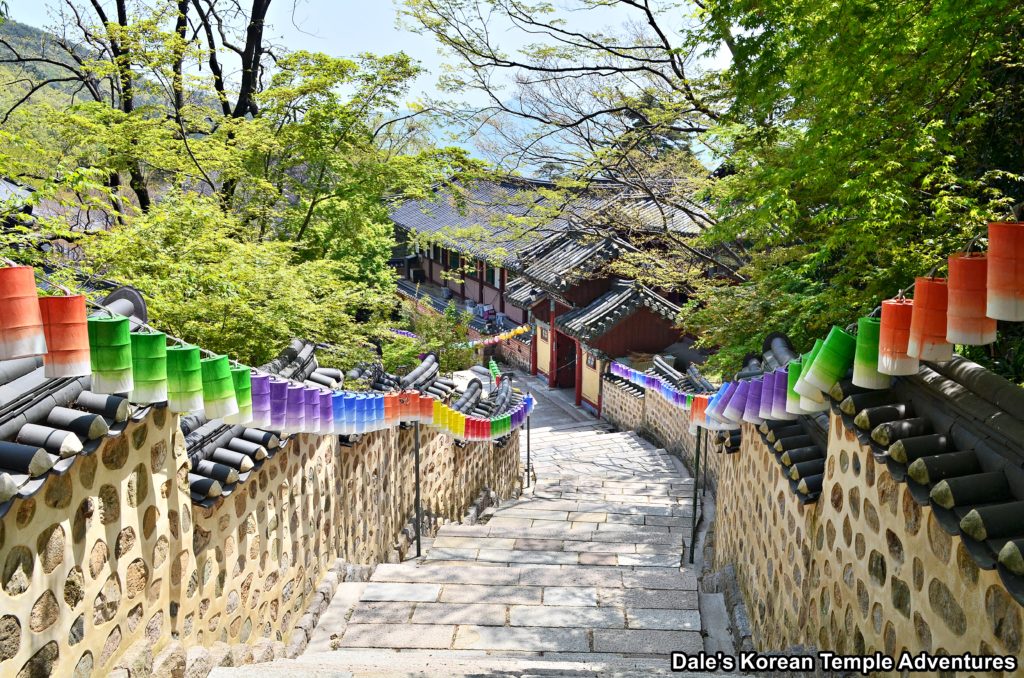
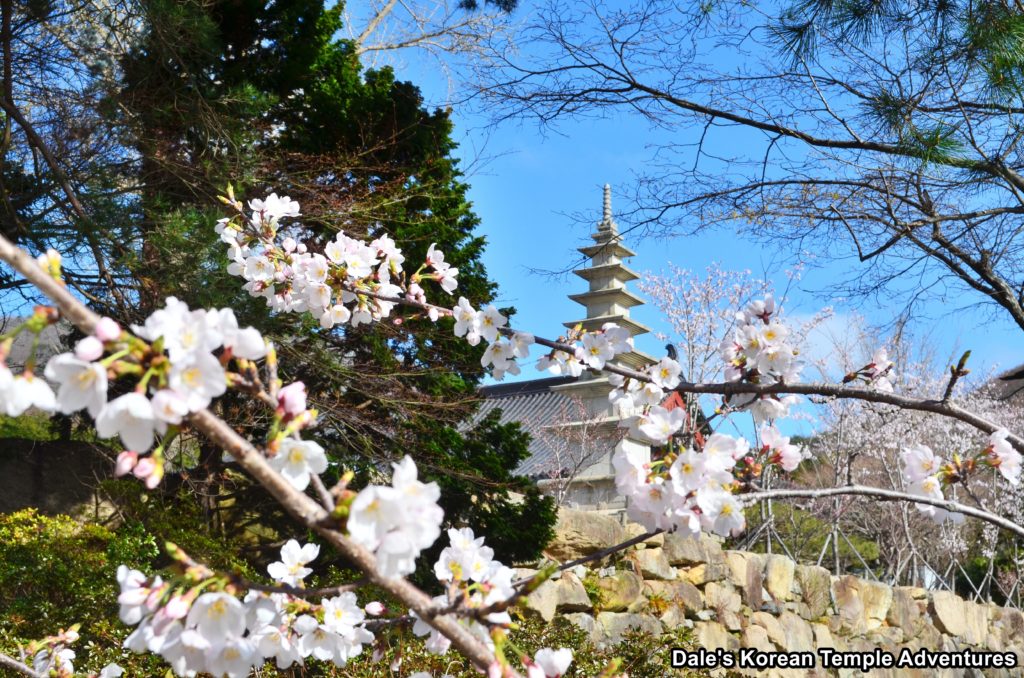
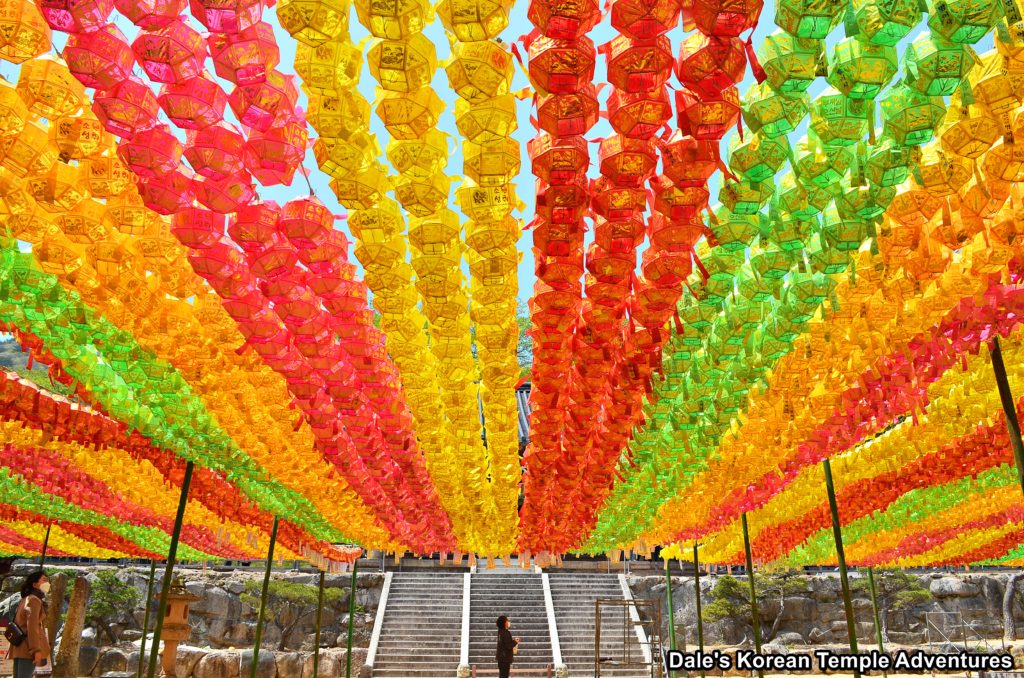
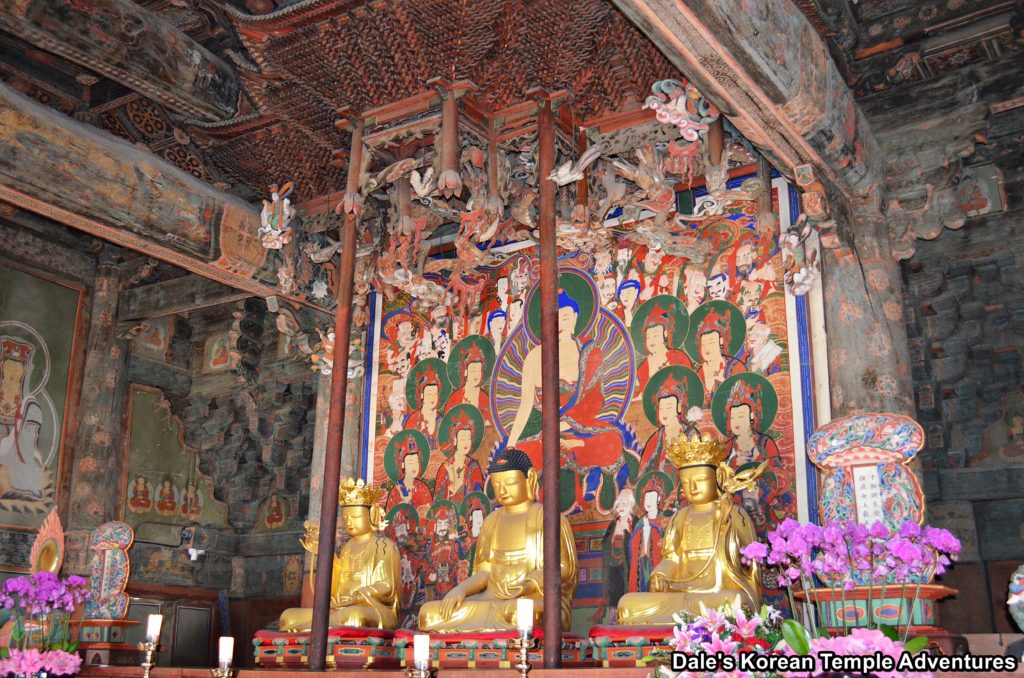
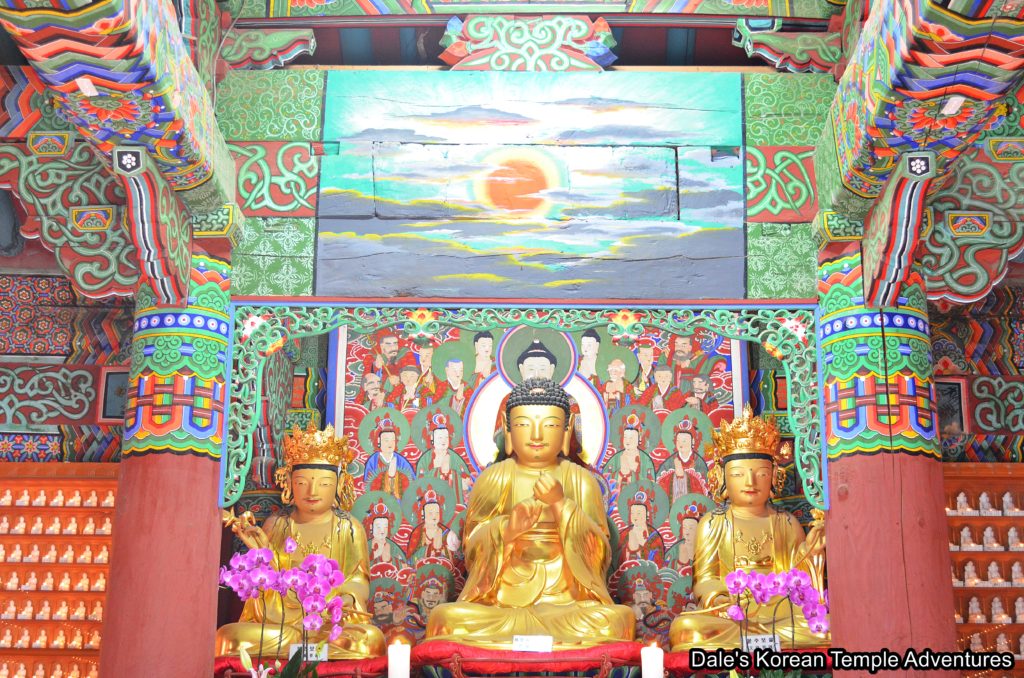
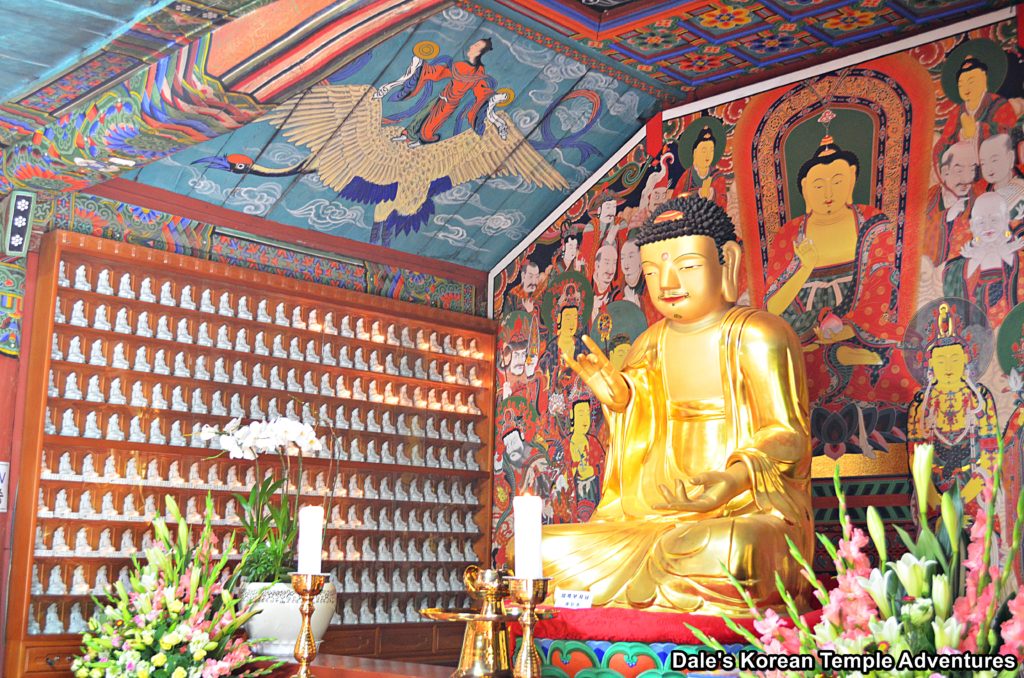
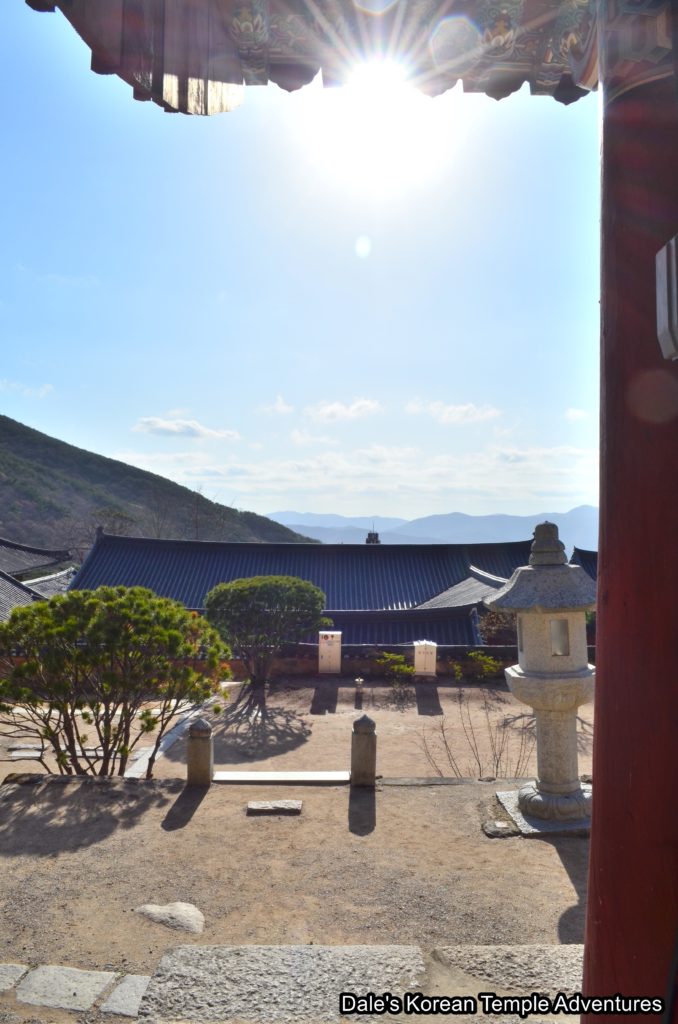


Recent comments